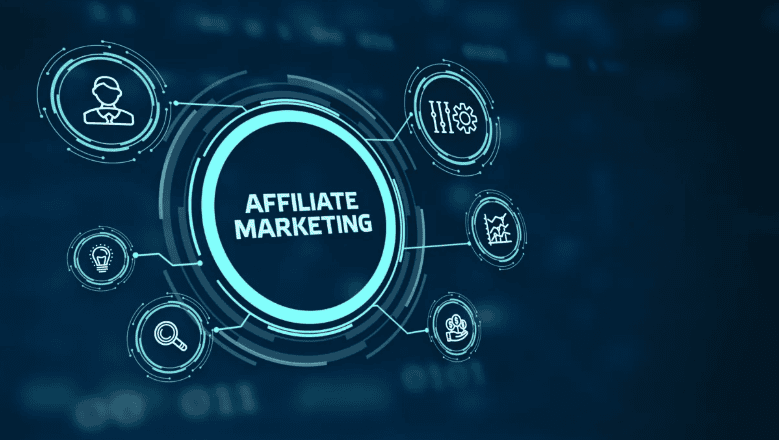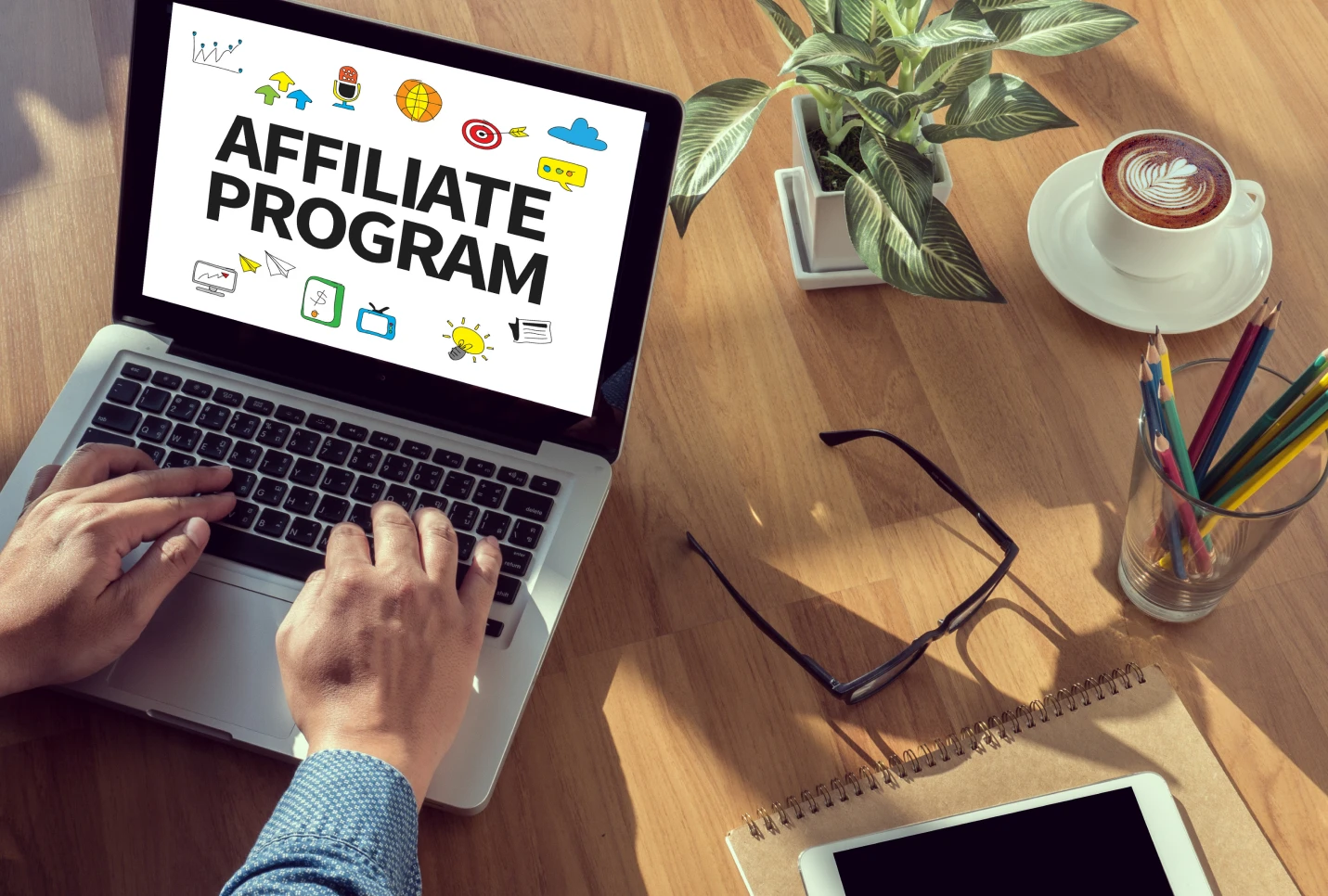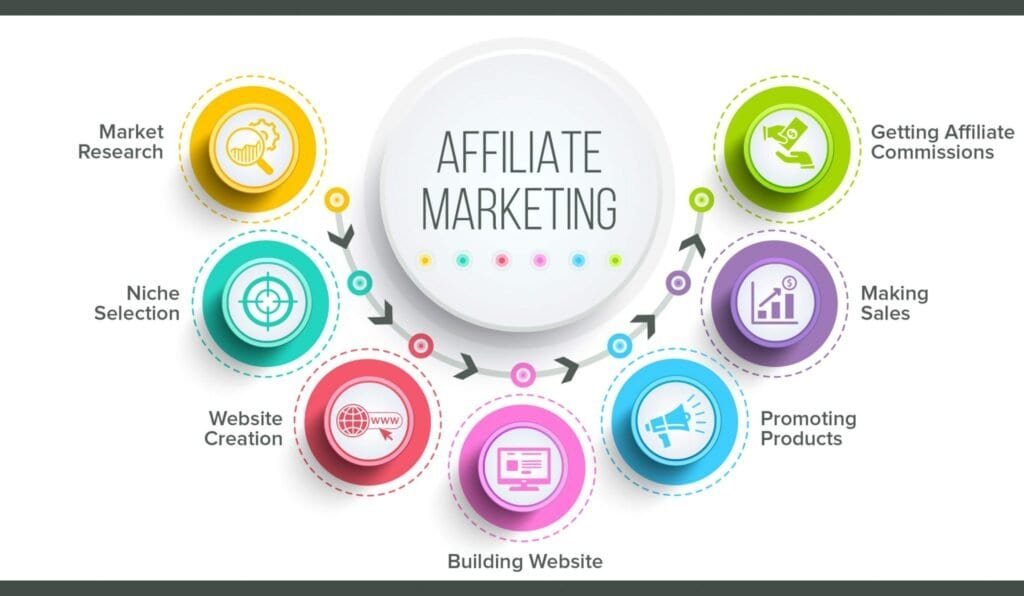Hello there! Thinking about diving into the world of affiliate marketing? Awesome! It’s a fantastic way to make money online, and I’m here to guide you through it. Don’t worry if you’re a complete newbie—I’ll break it down in a way that’s super easy to understand. Consider this your personal blueprint for affiliate marketing success. Let’s get started!
1. Demystifying Affiliate Marketing: What is it, and How Does it Work?
You might be wondering, “What exactly is affiliate marketing?” In simple terms, it involves recommending products or services you love to other people. When someone buys through your unique affiliate link, you earn a commission—pretty sweet, right? It’s like getting paid to share your favorite things!
Imagine this: you discover an amazing new gadget that makes your life easier. You’re so excited that you tell all your friends, and some of them decide to buy it. In affiliate marketing, you’d get a little reward for each friend who purchased the gadget through your recommendation.
1.1. Breaking Down the Basics: The Affiliate Marketing Model
- Earn commission by selling another brand’s products or services: You’re essentially acting as a middleman, connecting businesses with potential customers.
- It’s based on a revenue-sharing concept: Both you and the merchant benefit when a sale is made through your affiliate link.
- It’s a well-tested monetization model offering profitability for all parties: Businesses gain exposure and sales, and you earn a commission without having to create your own products.
1.2. How Do You Actually Get Paid? Understanding Affiliate Commission Models
You get paid when people take action on the advertiser’s website through your affiliate link. There are three main ways to earn money as an affiliate marketer:
- Pay Per Sale (PPS): Earn a percentage of the sale price when someone buys a product through your link. This is the most common model.
- Pay Per Click (PPC): Get paid for every click you send to the merchant’s website, regardless of whether a sale is made.
- Pay Per Lead (PPL): Earn a commission when a visitor completes a specific action, like signing up for a newsletter or filling out a form, after clicking your link.

2. Niche Down to Stand Out: Finding Your Affiliate Marketing Gold Mine
2.1. Why Niching Down is the Secret Sauce to Success
Before you dive in, choosing a niche is crucial. A niche is your area of expertise—it could be anything from pet care to sustainable living to digital marketing. Niching down helps you:
- Stand out from the competition: It’s easier to become a recognized authority in a specific area than trying to cover everything.
- Attract a targeted audience: People seeking information within your niche are more likely to be interested in your recommendations.
- Dominate search results: It’s less competitive to rank higher on search engines for keywords related to your niche.
2.2. Unearthing Your Perfect Niche: A Treasure Hunt
Finding the right niche can feel overwhelming, but here are some tips to guide you:
- Follow Your Passion: What are you genuinely excited about? What topics could you talk about for hours? Your passion will make creating content more enjoyable and engaging.
- Evaluate Market Demand: Is there an audience for your niche? Use keyword research tools to see how many people are searching for related topics.
- Size Up the Competition: While some competition is healthy, you don’t want to enter an oversaturated market. Look for a good balance between demand and manageable competition.

3. Creating Your Content Kingdom: Building an Affiliate Website That Converts
3.1. Building the Foundation: Your Website Blueprint
Think of your website as your online storefront. It showcases your content, builds trust with your audience, and drives those affiliate sales. Here’s how to set it up:
- Choose a Domain Name: Your domain name is your online address (e.g., www.yourwebsite.com). Make it catchy, memorable, and relevant to your niche.
- Select a Hosting Provider: A hosting provider stores your website’s files and makes them accessible online. Choose a reliable provider with good uptime and customer support.
- Pick a Website Builder: User-friendly website builders like WordPress, Wix, and Squarespace make creating a professional-looking site easy, even if you’re not tech-savvy.
3.2. Weaving a Web of Words: Content That Captivates and Converts
Content is king in affiliate marketing. It attracts visitors to your site, educates them about the products you recommend, and encourages them to click your affiliate links. Focus on creating:
- Informational Content: Provide valuable information that helps your audience solve problems or learn new things. Think how-to guides, tutorials, and in-depth articles.
- Product Reviews and Comparisons: Help your audience make informed buying decisions by comparing different products or providing thorough reviews. Share your honest opinions and highlight the pros and cons of each product.
- Best-of Lists: Curate lists of top product recommendations based on specific criteria, saving your readers time and effort.
3.3. The Power of Internal Linking: Guiding Your Visitors and Boosting SEO
Internal linking connects different pages on your website. It helps visitors navigate, discover more content, and spend more time on your site. Think of it as creating a treasure map, guiding visitors to valuable information and, ultimately, your affiliate offers.
4. Igniting Your Traffic Engine: Driving Visitors to Your Affiliate Website
4.1. Search Engine Optimization (SEO): The Marathon, Not a Sprint
SEO involves optimizing your website and content to rank higher in search engine results pages (SERPs). It takes time and effort, but it’s worth it for the consistent, passive traffic it can generate. Here are the key elements:
- Keyword Research: Uncover the terms people are using to find information in your niche. Use keyword research tools to identify relevant keywords with decent search volume and manageable competition.
- On-Page Optimization: Make your website content and technical elements search engine-friendly. Optimize your title tags, meta descriptions, headers, image alt text, and content structure.
- Off-Page Optimization: Build high-quality backlinks to your website from other reputable sources. Backlinks act as votes of confidence, signaling to search engines that your site is trustworthy and authoritative.
4.2. Social Media Marketing: Amplifying Your Reach and Building a Community
Platforms like Facebook, Instagram, Pinterest, and Twitter are powerful for connecting with your audience, building a community, and driving traffic. Here’s how to leverage them:
- Engage with Your Audience: Respond to comments, participate in discussions, and build relationships with your followers. Show that you’re a real person who cares about their needs and interests.
- Share Valuable Content: Provide helpful tips, engaging stories, and behind-the-scenes glimpses to keep your followers entertained and informed. Mix in promotional content with valuable, non-promotional posts.
- Run Targeted Ads: Reach a wider audience and promote your affiliate offers through targeted social media ads. Refine your targeting options to ensure you’re reaching the right people.
4.3. Email Marketing: Nurturing a Loyal Tribe of Subscribers
Building an email list cultivates loyal followers genuinely interested in your niche. It’s a direct line of communication to promote your affiliate offers. Here’s how to build and nurture your list:
- Offer a Lead Magnet: Entice people to subscribe by offering a valuable incentive, like a free ebook, checklist, or discount code.
- Deliver Consistent Value: Send regular emails with helpful tips, exclusive content, and, of course, your affiliate recommendations. Don’t just bombard your subscribers with sales pitches—provide value first and foremost.
- Nurture Relationships: Personalize your emails, segment your list based on interests, and make your subscribers feel like they’re part of a special community.
5. Transforming Clicks into Cash: Optimizing for Affiliate Conversions
5.1. The Art of Persuasion: Crafting Compelling Calls to Action
A call to action (CTA) encourages your readers to take the next step—it could be “Learn More,” “Get Your Discount,” or “Sign Up Now.” Here’s how to make your CTAs stand out:
- Clarity and Conciseness: Use action-oriented language that tells readers exactly what you want them to do. Avoid being vague or using jargon.
- Highlight the Benefits: Don’t just tell people to click; explain why they should. What will they gain? Will they solve a problem, save time, or learn something new?
- Visual Cues: Draw attention to your CTAs with contrasting colors, bold text, buttons, or images. Make them visually appealing and easy to spot.
5.2. Building Trust and Credibility: The Foundation of Conversions
People buy from those they trust. Here’s how to build that trust as an affiliate marketer:
- Be Transparent: Disclose your affiliate relationships upfront. Let your audience know you may earn a commission if they purchase through your links. Honesty is key.
- Provide Authentic Reviews: Share both the positive and negative aspects of the products you recommend. Don’t shy away from mentioning drawbacks—it shows you’re being objective and genuine.
- Offer Real Value: Focus on helping your audience, not just making a quick sale. Provide helpful content, answer questions, and be a resource they can rely on.
5.3. Tracking and Analyzing: The Key to Continuous Improvement
To succeed in affiliate marketing, track your results and make adjustments as needed. Most affiliate networks provide analytics that show:
- Click-Through Rates (CTR): How many people are clicking your affiliate links? A higher CTR indicates your links are enticing and placed effectively.
- Conversion Rates: How many clicks lead to sales? A good conversion rate means your recommendations are persuasive, and the product is a good fit for your audience.
- Earnings Per Click (EPC): How much are you earning on average for each click? This metric helps you evaluate the profitability of your campaigns.
By analyzing these metrics, you can identify what’s working and what’s not and optimize your campaigns for maximum profitability.

6. Embracing the Journey: The Affiliate Marketing Mindset
6.1. Affiliate Marketing is a Marathon, Not a Sprint
Building a successful affiliate marketing business takes time, effort, and patience. Don’t expect to get rich quick—focus on building a sustainable business for the long haul. Researching your niche and understanding your audience is crucial for long-term success. By creating valuable content and incorporating strategic links for affiliate marketing, you can effectively drive traffic and conversions. Remember, consistency and adaptability are key components in building a thriving affiliate marketing venture.
6.2. Don’t Overcomplicate Things
It’s easy to get bogged down in the technical details, but don’t let that stop you from taking action. Start with the basics and gradually expand your knowledge and skills.
6.3. Focus on Building Relationships
Affiliate marketing is about connecting with people and building relationships. Engage with your audience, provide value, and be authentic—people will appreciate it, and it will pay off in the long run.
Conclusion
Starting an affiliate marketing business is like embarking on an exciting adventure—it has challenges and rewards, but with the right mindset and a solid plan, you can achieve incredible success. Remember to: Focus on building strong relationships with your audience and selecting quality products to promote. To maximize your chances of success, consider implementing some effective affiliate marketing program launch tips that can streamline your efforts and boost your visibility. Consistency and adaptability are key, so be prepared to learn and adjust your strategies along the way. Set clear goals and consistently analyze your progress to stay on track. Additionally, invest time in learning proven affiliate marketing success strategies, as these will help you navigate common pitfalls and enhance your overall effectiveness. Building strong relationships with your audience and partners will also contribute significantly to your growth in this dynamic field. Stay committed to learning and adapting as you navigate this journey, as the landscape of affiliate marketing is always evolving. Exploring affiliate marketing basics for beginners will provide you with the crucial knowledge needed to make informed decisions. Surround yourself with a community of like-minded individuals who can offer support and share valuable insights along the way.
- Provide Value: Focus on helping your audience solve problems or learn new things.
- Build Trust: Be transparent, honest, and authentic in your recommendations.
- Never Stop Learning: The affiliate marketing landscape is constantly evolving—stay curious and adapt to changes.
FAQs
How much can I realistically earn with affiliate marketing? The earning potential is huge and varies widely depending on your niche, the products you promote, your traffic levels, and your conversion rates. Some earn a modest side income, while others build six-figure businesses. The key is to focus on building a sustainable business, providing value to your audience, and continuously optimizing your strategies.
Do I need a website to do affiliate marketing? While a website provides more control and flexibility, it’s not strictly necessary to get started. You can leverage social media platforms, email marketing, or create content on platforms like YouTube to promote affiliate products.
How do I choose the right affiliate products to promote? Select products aligned with your niche that resonate with your audience and offer attractive commission rates. Choose products you genuinely believe in and would recommend even if you weren’t getting paid.

